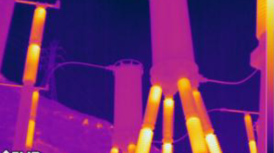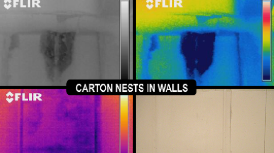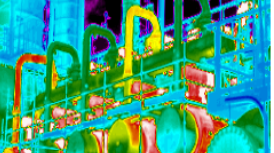How Thermography Can Be Used to Optimize Paper Machine Systems
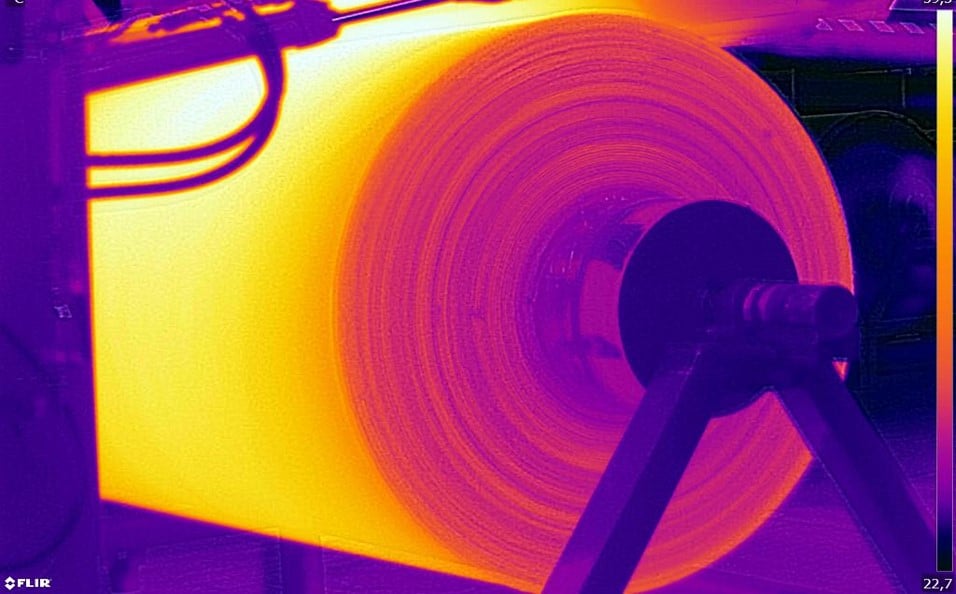
InfraMation 2016 Application Paper Submission
Robin J. Thon
Albany International Corp.
ABSTRACT
Thermography can be a very useful tool for optimizing systems on a paper machine. These include:
Liquid Ring Vacuum Pumps. Accurate temperature measurements need to be made to insure the pump is running efficiently. Thermal imaging cameras are more effective for checking these temperatures than IR spot meters. Thermal images can also show plugged areas within the liquid ring pump and the seal water supply.
Profiling Steam Boxes. Thermal images can line up temperature profiles to steam box actuators to check if the actuators are operating properly. Steam box efficiency can be calculated using thermal imaging.
Profiling Rewet Showers. These systems apply moisture back to the paper web. Thermal imaging can be used to determine inefficient nozzle spray patterns.
Steam Coil Pocket Ventilation Systems. These systems heat air to provide dry hot air to the paper machine make up system. Steam coil leaks will add unwanted moisture back into the paper machine causing uneven profiles and harder web drying. Thermal images can be used to find leaks safely.
MANUFACTURING TRYING TO REDUCE COSTS
Manufacturing plants are trying to reduce costs wherever possible. 1) Liquid ring vacuum pumps can cost between $500K-$1.5MM to operate annually. Most pumps use 80-115 gallons of water per minute. 2) Steam boxes use from 7.5K-20K pounds of steam per hour. This costs between $387K-$1MM annually. 3) Rewet showers can cost more in energy use because they do not profile properly when they fail. This can cause more steam use in the dryer section of the paper machine. 4) Steam coil leaks add unwanted moisture into the dryer section raising the steam usage and costing more in steam energy. This can be around $100K-$500K annually. A thermal camera is a very effective tool to inspect these areas of operations.
USING A THERMAL CAMERA AS AN INSPECTION TOOL
Liquid Ring Vacuum pumps
Liquid ring vacuum pumps use a ring of water around an impellor. The liquid ring compresses and creates a vacuum. The pump needs the proper amount of water flow to create vacuum and not damage the pump. Too much water can cause pump damage and take up valuable capacity for vapor. Inlet sprays are used on the vapor intakes to condense the volume of gas entering the pump allowing for more vapor capacity. A thermal imaging camera can be used to take accurate temperature readings and also do visual inspection of critical parts of the pump. Fig. 1 below shows the internal components of the liquid ring pump. Fig. 2 below shows a temperature table created taking the critical measurements on a liquid ring pump. There are several zeros in the inlet cooling column indicating the inlet sprays are plugged. Two measurements are showing a negative number meaning the inlet cooling water is actually hotter than the vapor entering the pump. This is not helping to cool the vapor so shutting off the inlet spray would be more of a benefit. The temperature difference between the outlet and seal water should be between 15⁰-50⁰F. If the temperature is lower than 15⁰F, there is too much seal water flow. If the temperature is higher than 50⁰F, there is too little seal water flow.
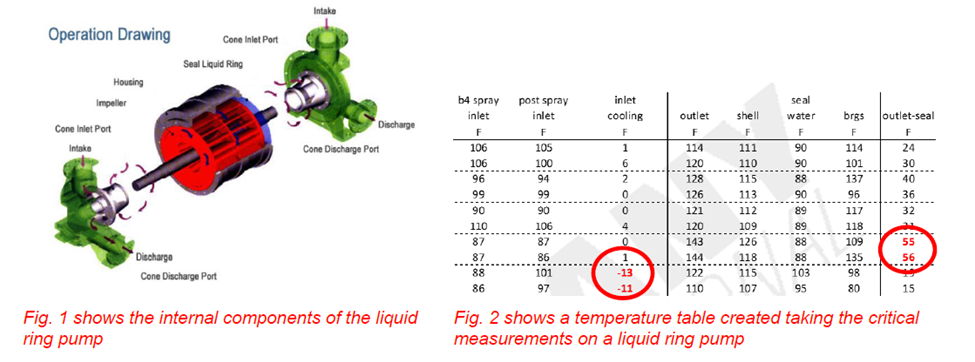
Fig. 3 shows a properly operating inlet spray (black arrow), as well as a plugged inlet spray (green arrow). Fig. 4 shows perfect pump operation temperatures. The inlet sprays are operating at properly cooling the vapor entering the pump. The liquid ring can easily be seen on each side of the pump where the black arrows are pointing.
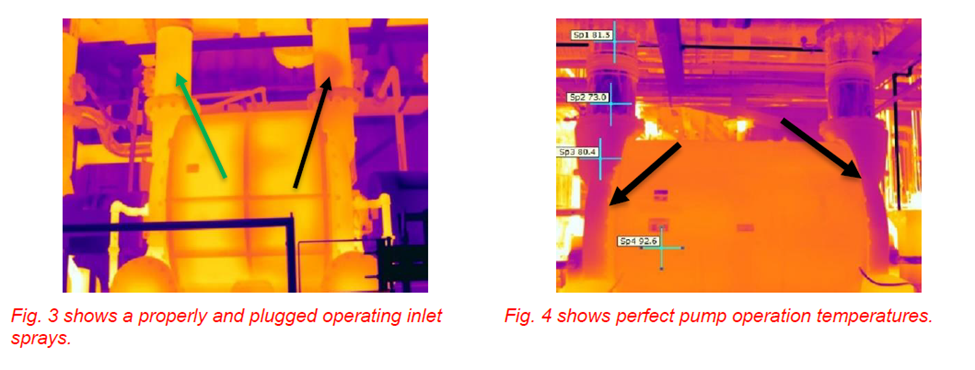

Profiling Steam Box
A profiling steam box is used to correct cross direction moisture profile issues that are created on the paper machine. Steam boxes are also used to raise the web temperature before entering the steam dryer section. The boxes are usually placed in harsh environments and need service to keep them operating properly. The steam nozzles are susceptible to plugging. The actuators can also stick or fail. An infrared camera is an excellent tool to check the proper operation of the steam box. Fig. 7 below shows the cross direction profile from the paper web scanner.

Fig. 8 below shows the actuator settings on the steam box from the DCS trying to correct the cross direction profile from Fig. 7 above.

Fig. 9 below shows the thermal image after the profiling steam box. The temperature profile shows that the actuators are operating properly. The problem is that the area that should have more heat applied is not getting it. This means that the scanner is not mapping the cross direction profile properly and needs to be calibrated. The light green in Fig. 8 above, shows that the actuators are in manual mode, so heat will not be applied in this area. These actuators should either be raised or put in automatic mode so the steam box can correct the high moisture area in the paper web. Collecting a machine direction temperature profile using the average temperatures from the thermal images will help optimize the steam box and the paper machine as shown in Fig. 10 below. Raising the web temperature before the dryer section will raise the web solids and lower the steam usage in the dryer section.
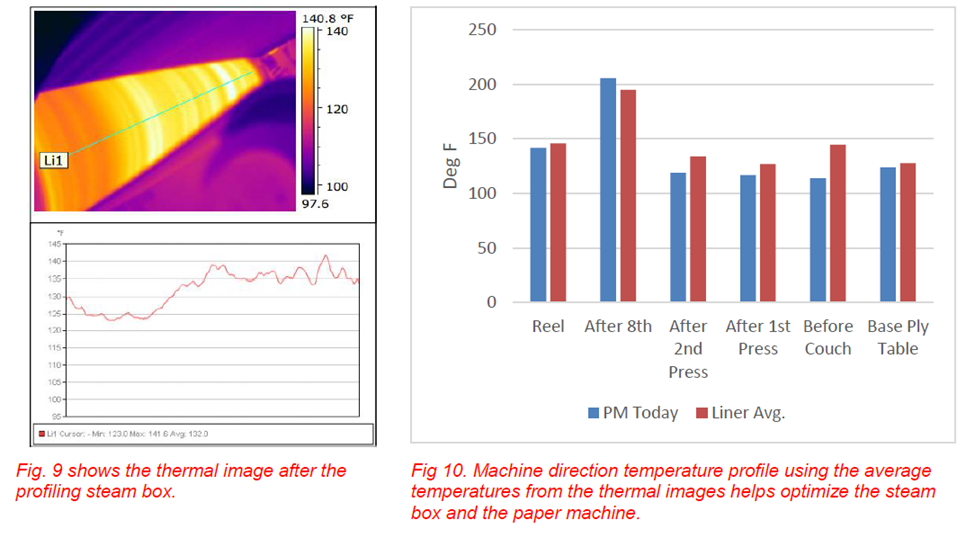
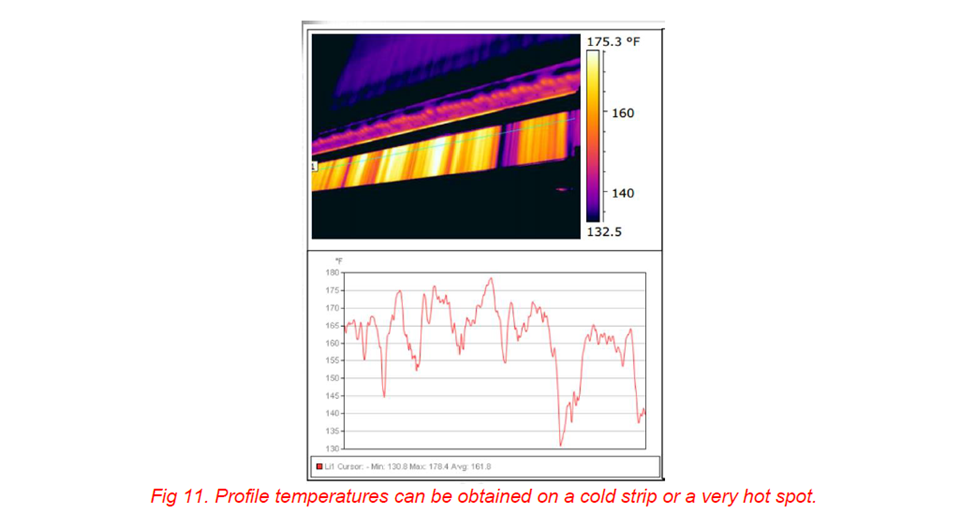
The best way to obtain the average temperatures across the web is to use a thermal image. The problem that happens with a spot gun is that a temperature can be obtained in the cold strip or a very hot spot shown in Fig. 11 above. Snapping a line and getting an average temperature will insure an accurate measurement. Getting an accurate machine direction temperature profile will also help to identify if the steam box is worth the operating cost or best to take off line and save operating costs.
Profiling Rewet Shower
Rewet showers are an inexpensive way to correct a cross direction moisture profile as well. The shower applies moisture to dry areas in the paper web to correct the cross direction moisture profile. These are normally positioned in areas that can collect paper debris and dust, which can plug the shower nozzles. A thermal camera works well with checking the proper operation of the rewet showers compared to the cross direction profile image.
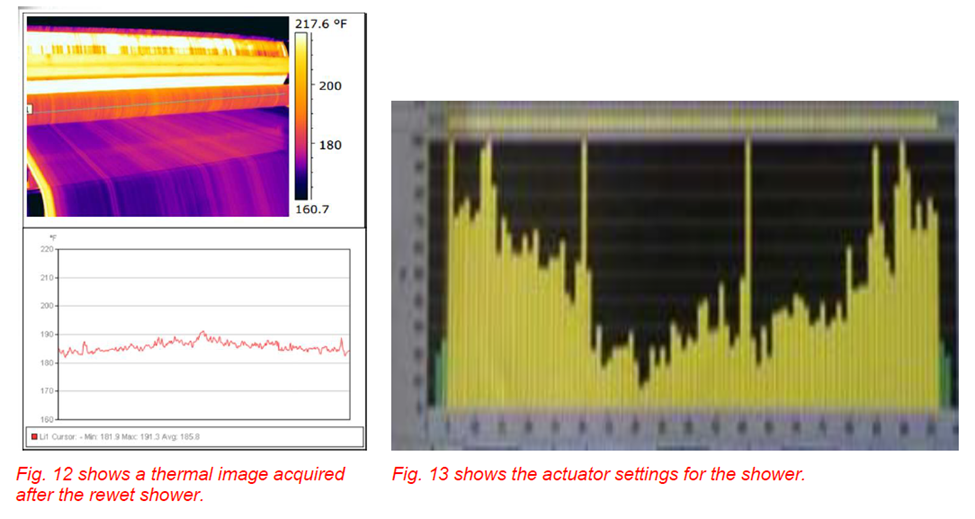
Fig. 12 above shows a thermal image acquired after the rewet shower. Fig. 13 above shows the actuator settings for the shower. The moisture is being applied on the front and back center of the web. The temperature changes are subtle, but can be seen in the thermal image. This shows that the shower is operating properly.
Steam Coil Pocket Ventilation Systems
Paper machines use pocket ventilation supply air to help evacuate moisture from the dryer section pockets and aid in getting a good cross direction moisture profile. The pocket ventilation systems use steam coils to heat the air before entering the paper machine dryer section. It is very crucial that there are no steam leaks in these coils. This will cause higher moisture in the air that will cause cross direction profile issues and more steam usage in the dryer section. Fig. 14 below shows a steam coil leak that is causing cross direction moisture profile issues on the paper machine (green arrow). This leak could not be seen visually, but the thermal image shows where the coils are leaking. This is causing higher moisture load in the supply air and adding to the paper machine operating cost. Even a small leak can add about $200K in costs annually.
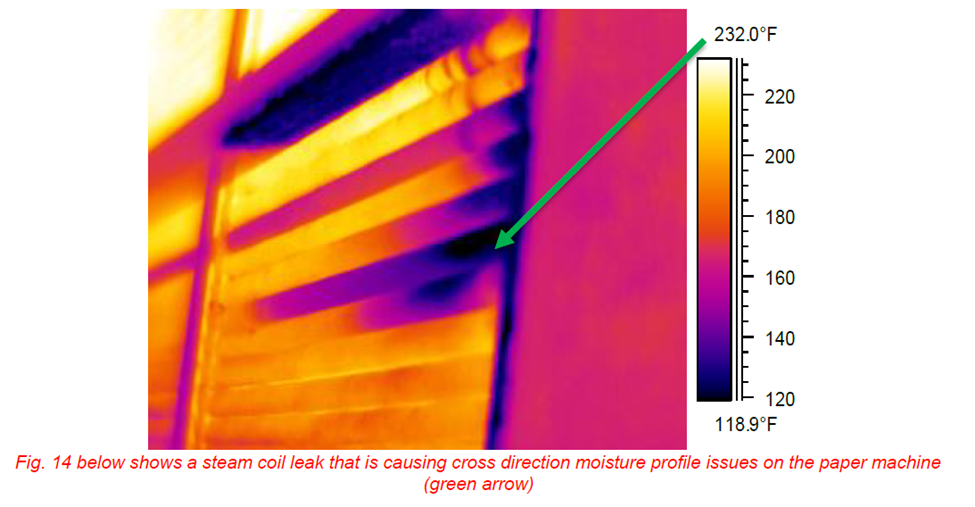
SUMMARY
Manufacturing costs can be reduced by using a thermal camera to collect temperatures on vital components of equipment. Even an inexpensive camera can be a valuable tool to collect much of the data. Potential problems can be averted by developing a preventive maintenance program utilizing thermal images taken with the thermal camera.
ABOUT THE AUTHOR
Robin is a level II certified thermographer and has been using the technology for 23 years. He is employed at Albany International as a staff engineer for the Process Analysis Group and has been in the paper industry for 37 years.
